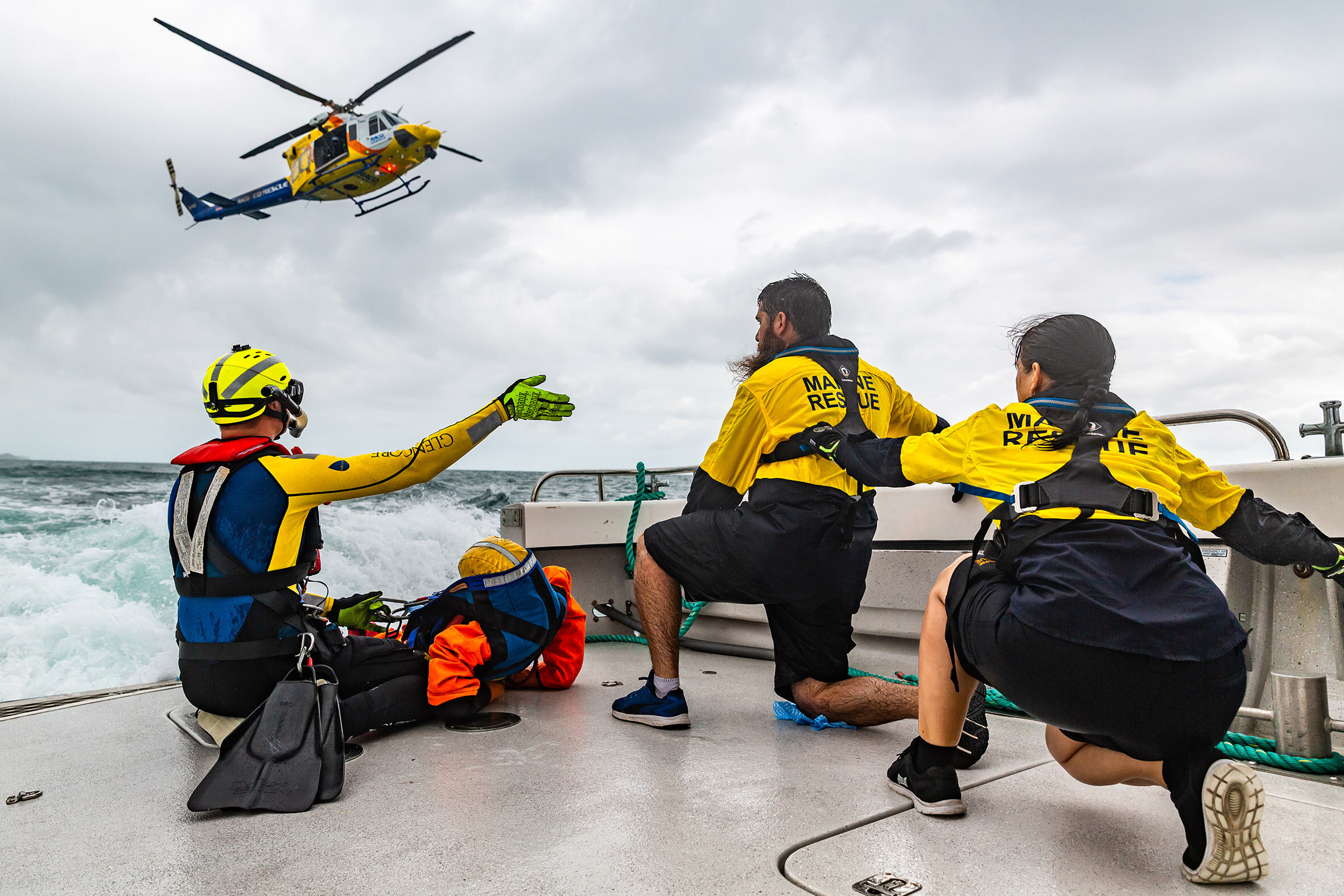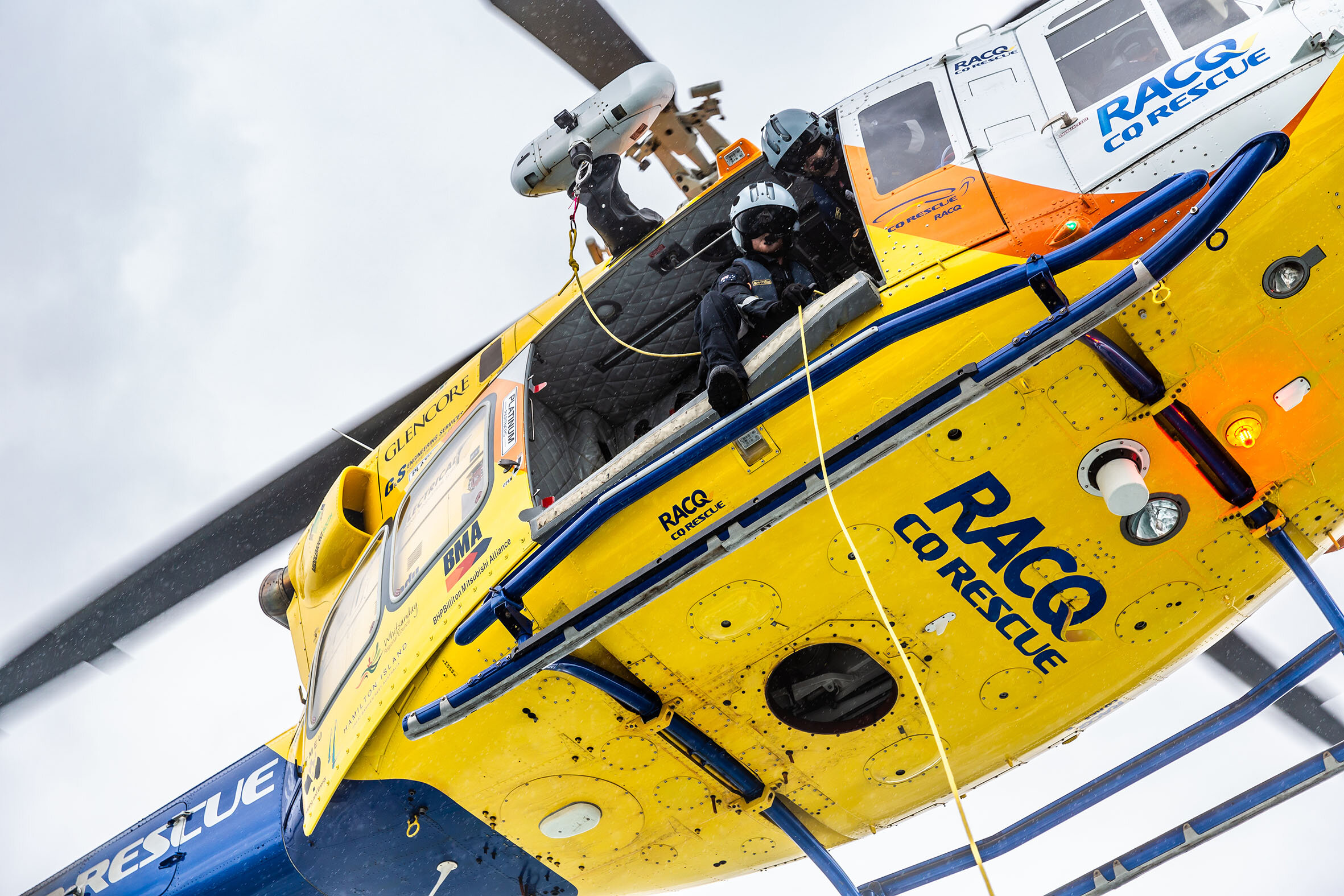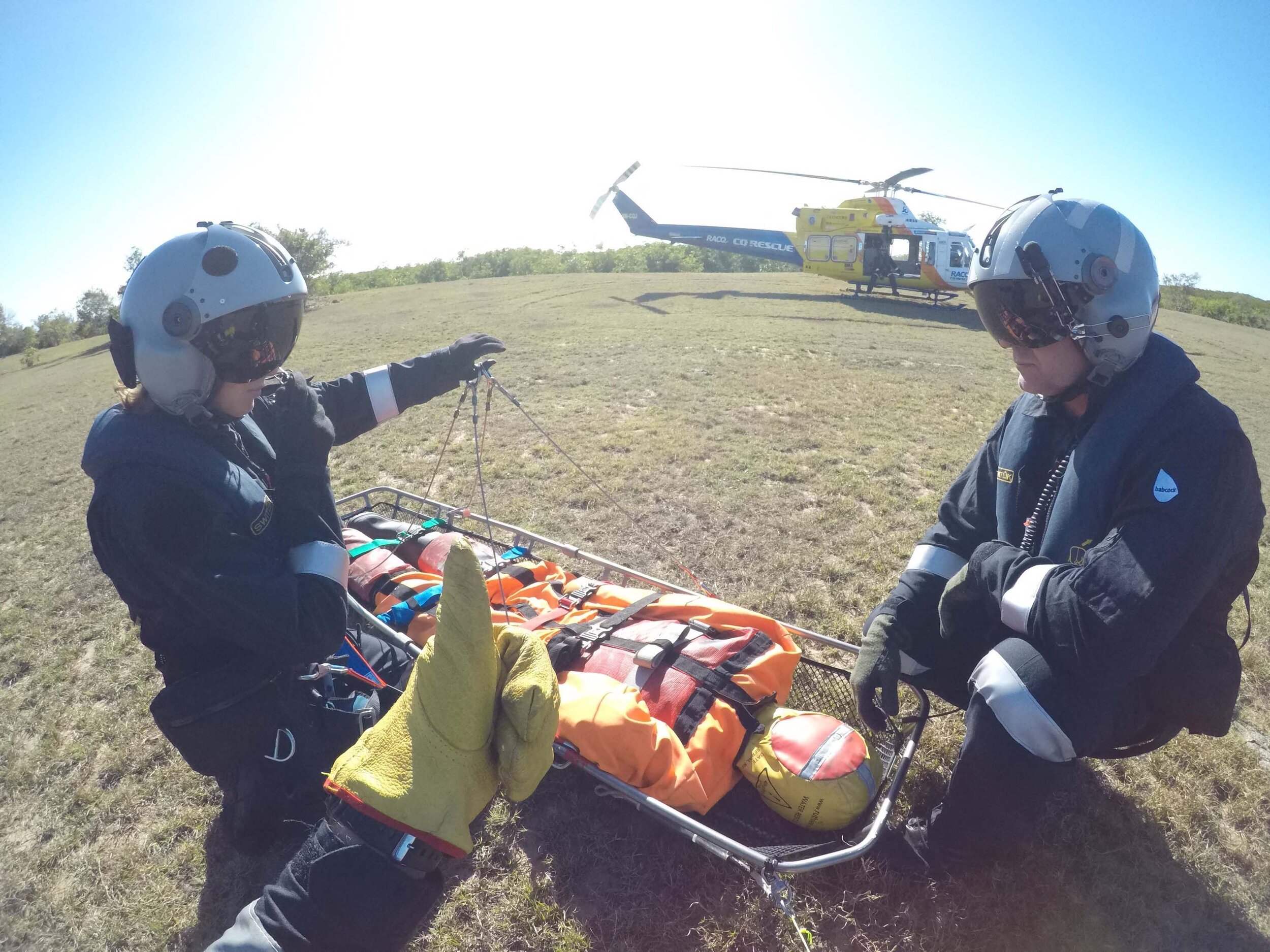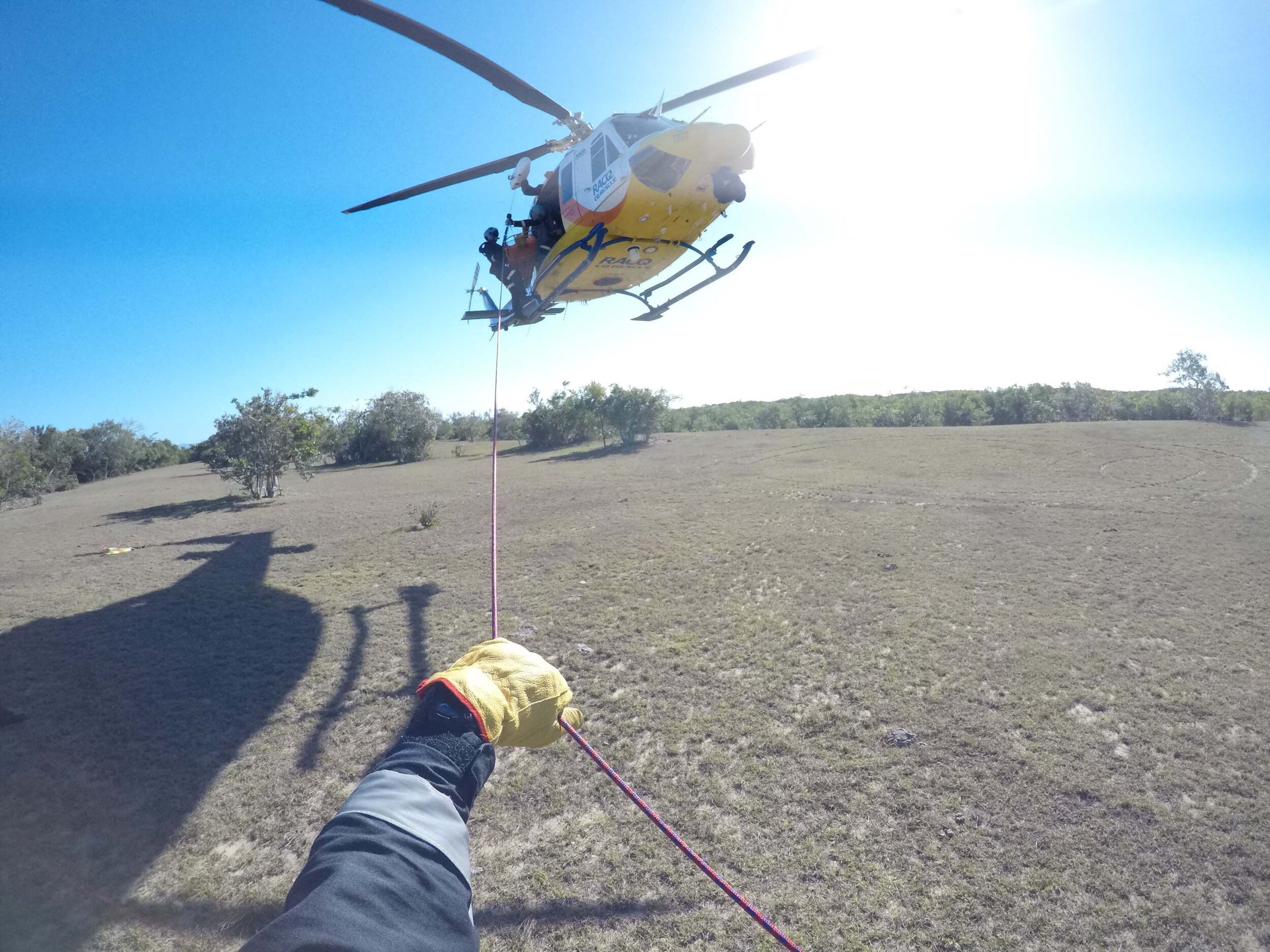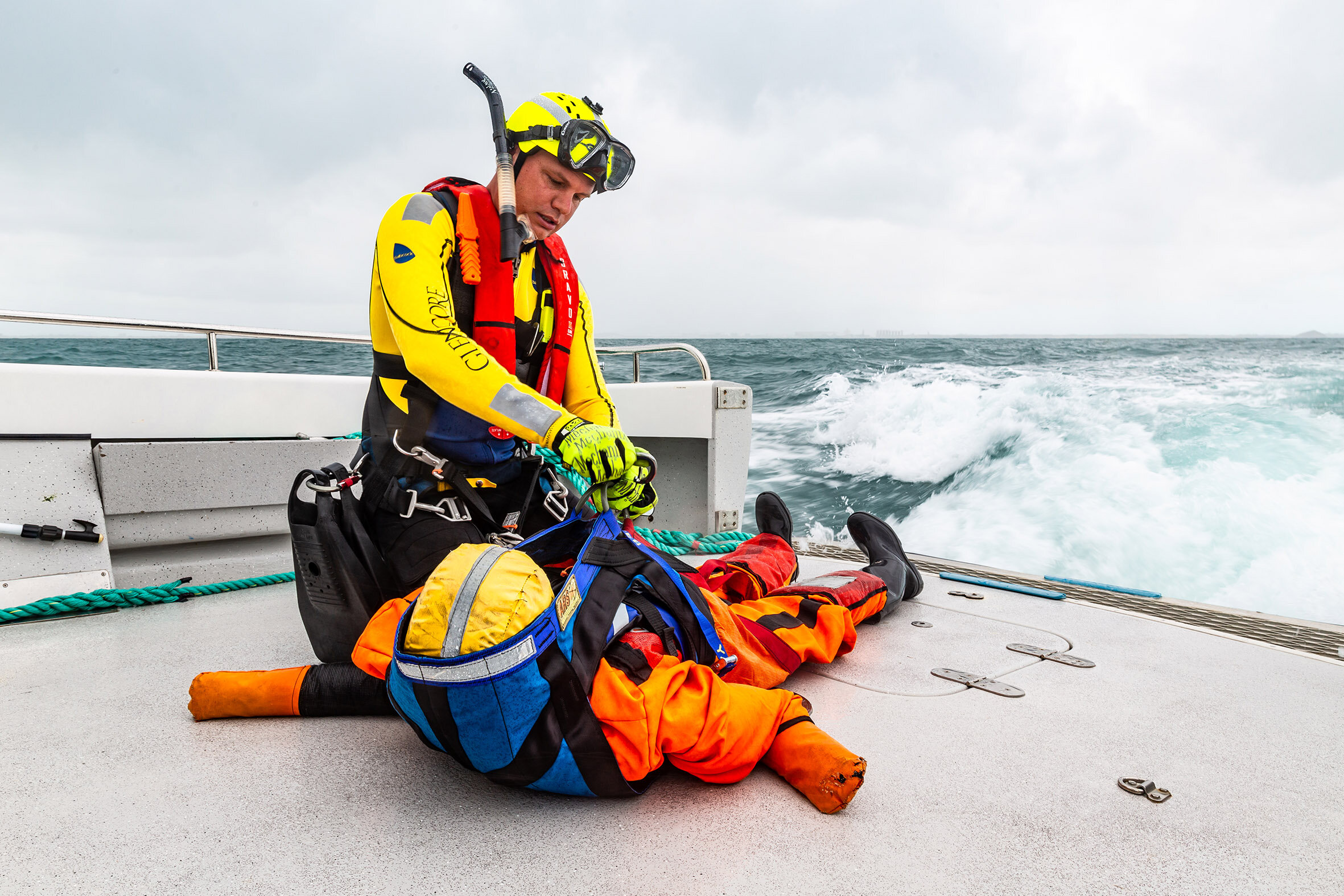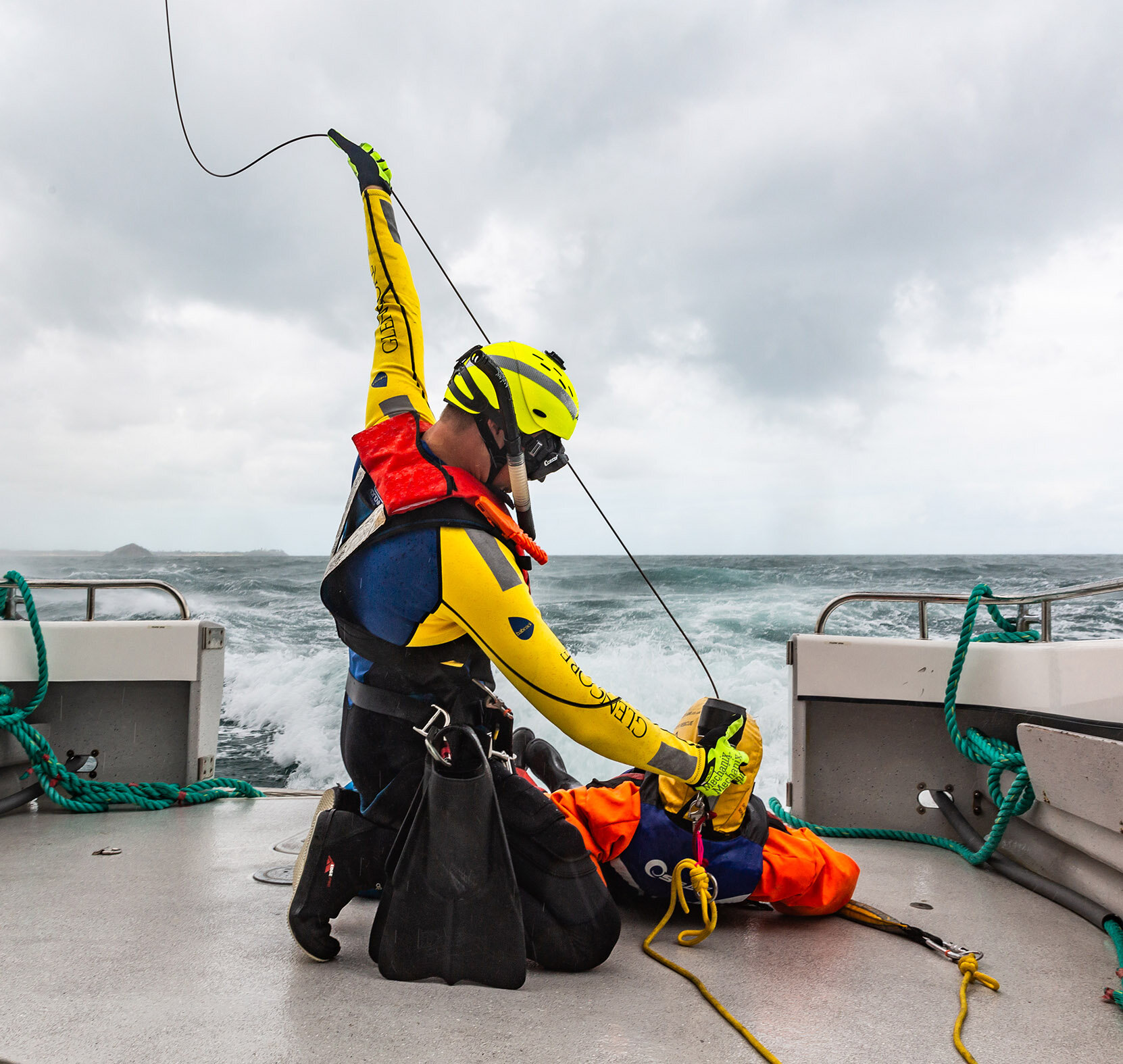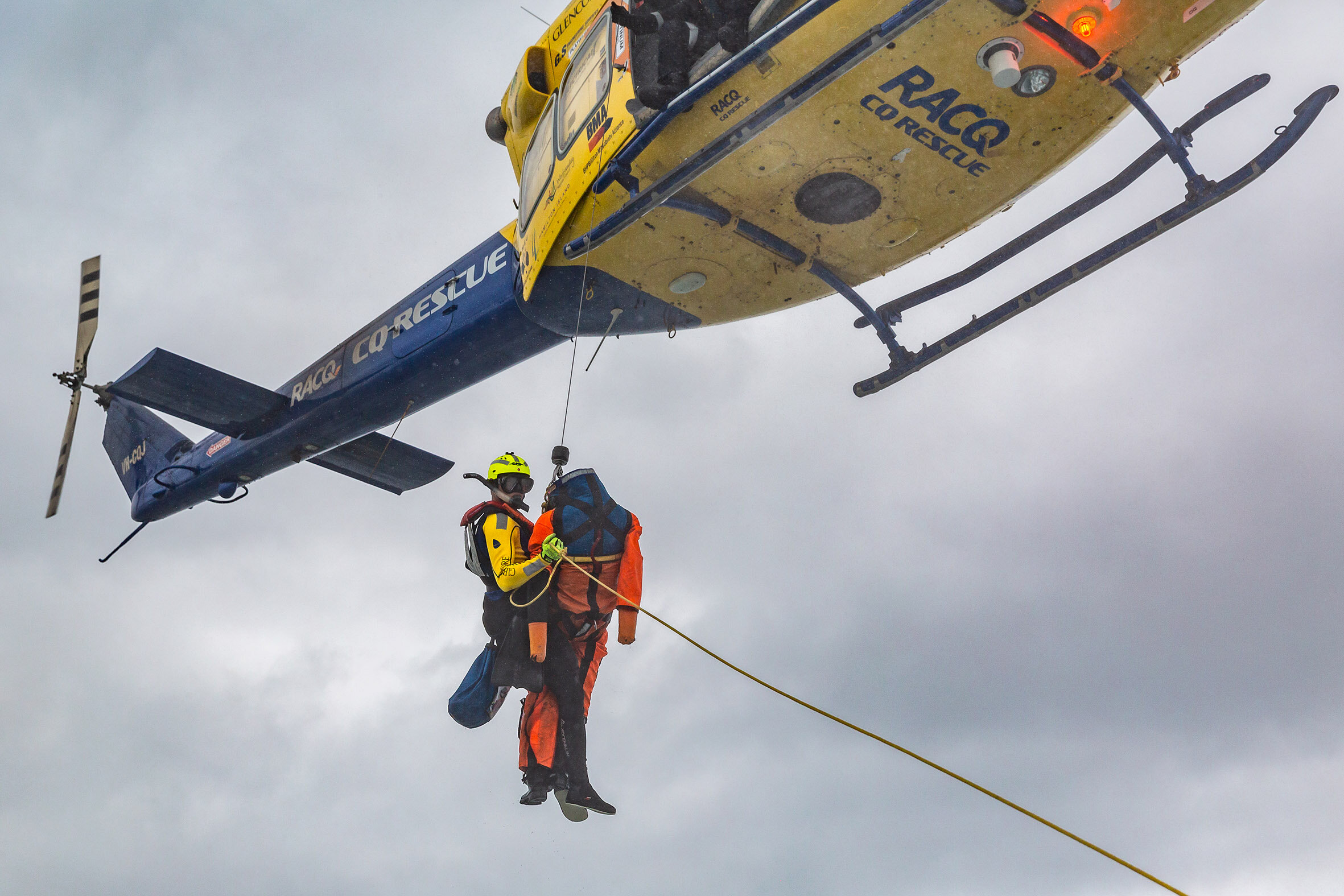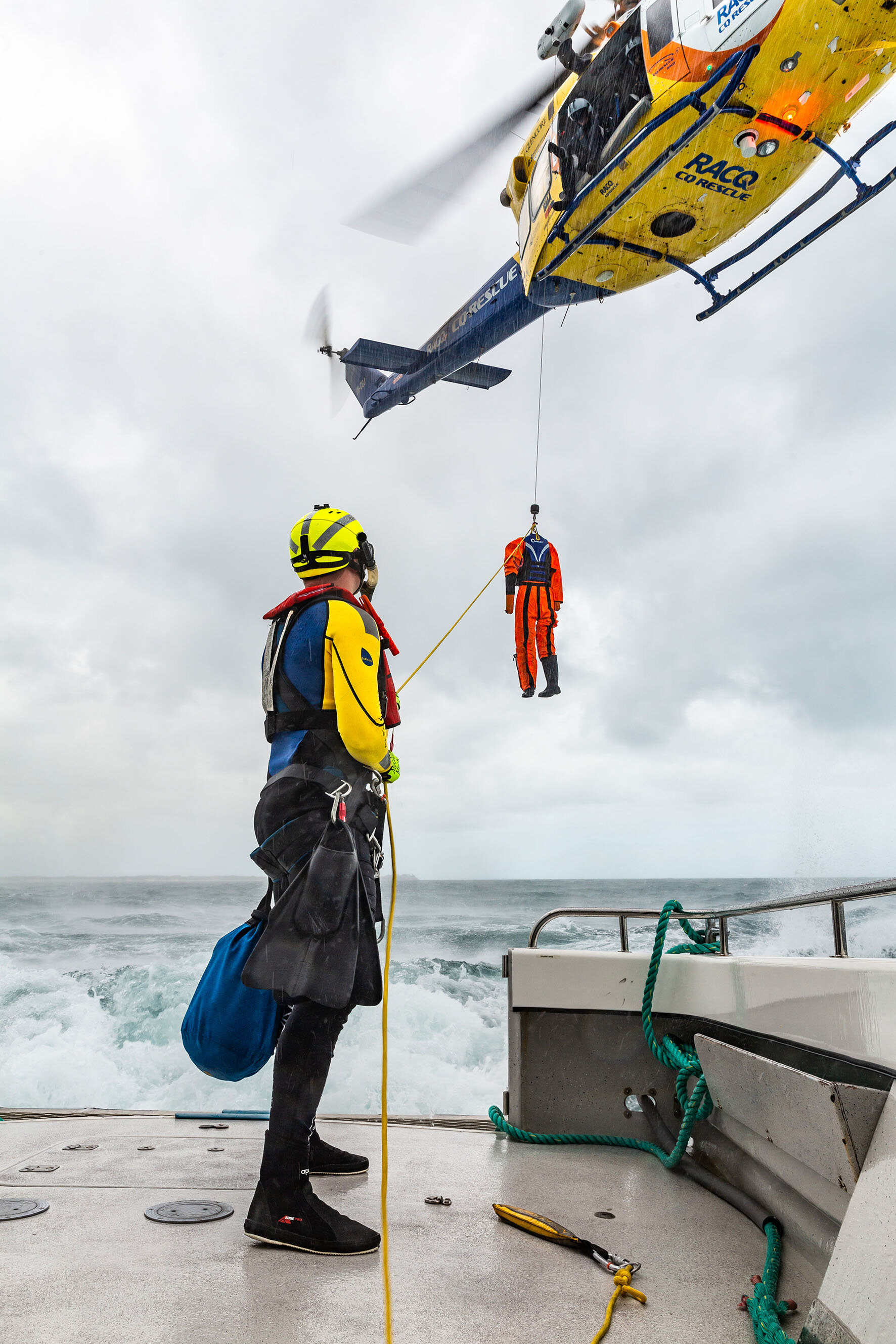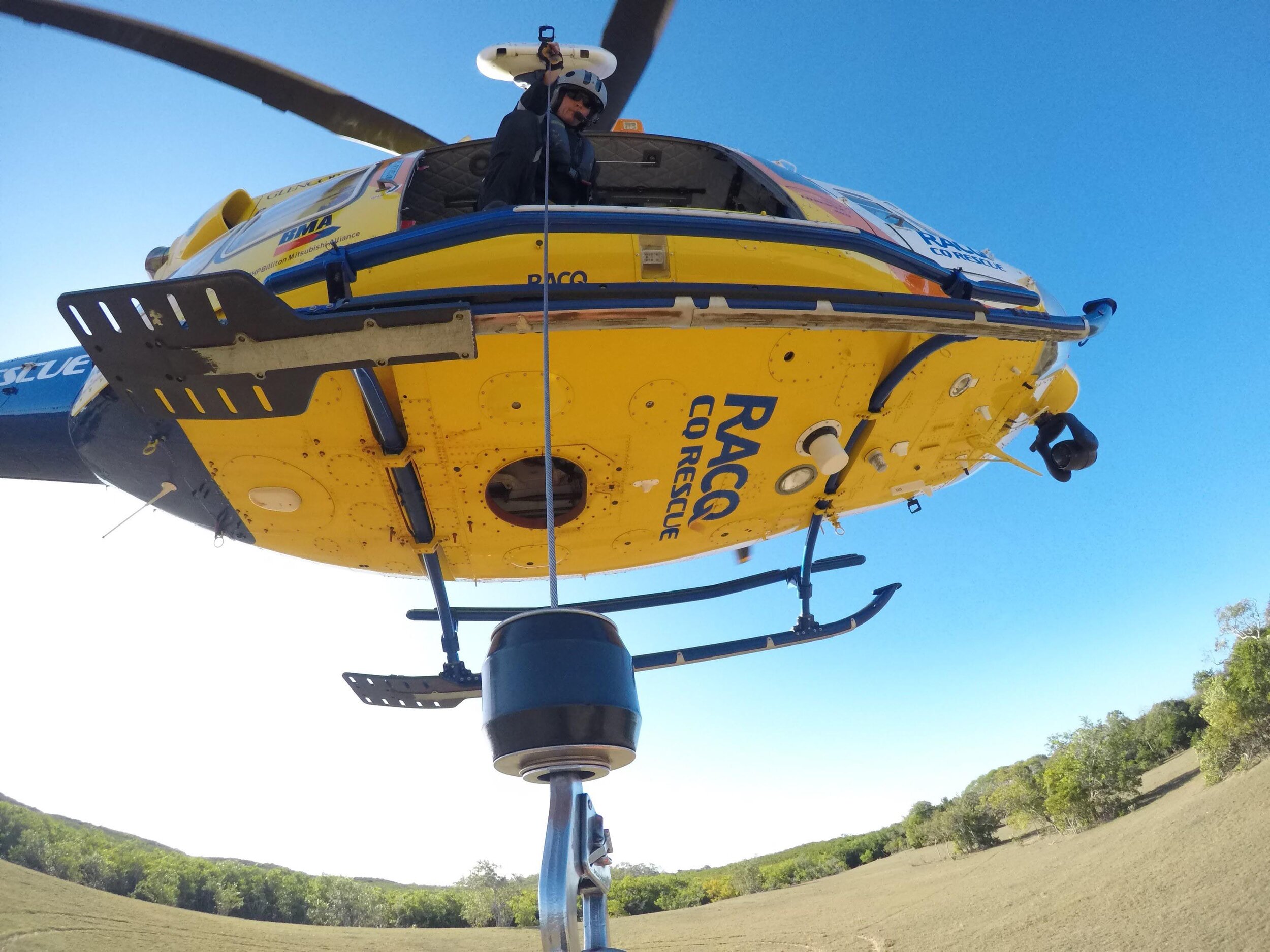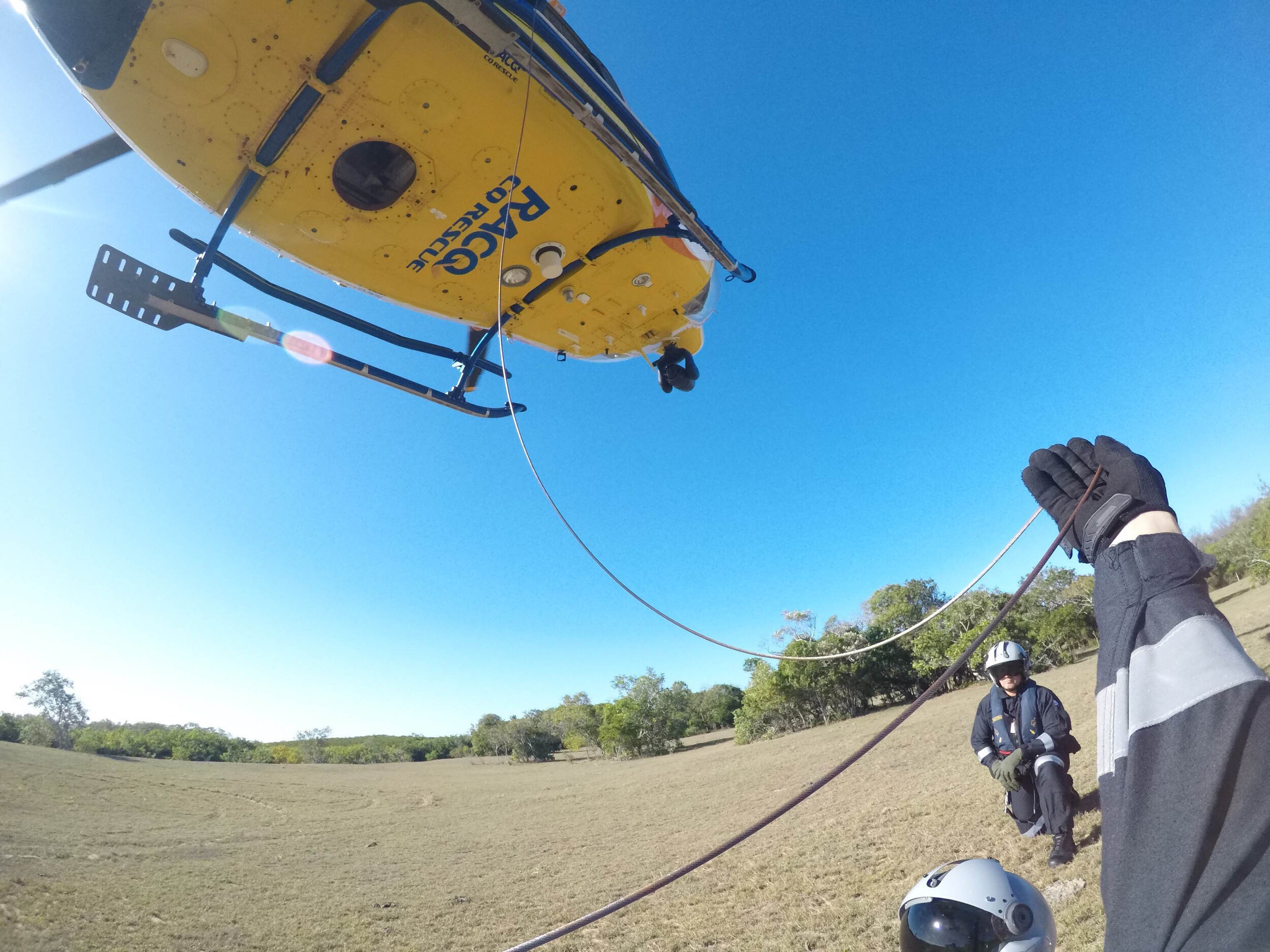When disaster strikes, we respond
Located in the Mackay-based BMA CQ Rescue hangar are two Bell 412 helicopters, one primary and a backup, which are twin-engine aircraft with a single four-bladed main rotor system and a tail rotor to provide directional control.
As a dedicated rescue aircraft, the interior of the helicopter is designed for the provision of patient care, maximum efficiency and the capability to be prepared for the many and varied types of rescue missions the helicopter responds to. The standard onboard configuration for emergency medical services includes a pilot, air crewmen, rescue crewmen, doctor, paramedic, and necessary medical, rescue, and aviation equipment.
BMA CQ Rescue is part of the Queensland Health Aeromedical Retrieval Network and is tasked by Retrieval Services Queensland which is based in Brisbane. The rescue helicopter can only be tasked through the 000 network, at the direction of Queensland Police, or by the Australian Maritime Safety Authority (AMSA).
The types of missions completed by BMA CQ Rescue in Central and North Queensland include:
IFTs: Inter-facility transfers (hospital to hospital)
Primary: Helicopter to the site of injury or illness including beaches, roadsides, workplaces, or properties.
Search and Rescues: Including responding to emergency beacon activations at the request of AMSA.
Equipment & training
Having the capability to save lives in a diversity of challenging situations whilst providing exceptional patient care, and maximum efficiency and the capability means being prepared for the many and varied types of rescue missions the helicopter responds to.
The standard onboard configuration for emergency medical services includes the following necessary medical, rescue and aviation equipment:
Aircraft Equipment IFT:
Stretcher
MD Monitor
Portable Oxygen Kit Bag
IFT Med Bag
Internal Oxygen Ventilator System fitted in Aircraft
Ferno scoop stretcher
Primary Winch Equipment:
Primary Med Bag
Tag Line
Highline
406 Rescue Winch Stretcher
Air Rescue Vest
Patient Harness
Hypo Rescue Strop
Child Restraint Capsule
Equipment Strap
Crew Aircraft Restraint Straps
Personal Gear Carried By Crew:
Flameproof flying suit
Flame retardant gloves
Communications Helmet with night vision goggles mount
Rescue crew harness and Y-Piece Quick release
Soft leather, all-weather boots
Switlik Lifejackets Containing – PLB, Flares, Sea Dye, Signal Mirror and Whistle, Strobe Light.
Rescue Crewman Water Rescue Gear
Gath Helmet
Dive Mask and Snorkel
Wetsuit
Gloves
Aircraft Specifications.
Aviation Call Signs: VH-CQJ and VH-VAU is RSCU 412
Aircraft Registration: VH-CQJ and VH-VAU
Single Pilot IFR (certified minimum) Certified by the manufacturer and the regulator (CASA) as a single pilot helicopter as a minimum. Fitted with dual controls our aircraft can be flown from either side. Certified for IFR (instrument flying rules) means our aircraft is instrumented with the appropriate equipment to be safe to fly in a cloud, however, there are limitations to the weather conditions it is certified to fly in.
600lb Goodrich Rescue Hoist Winch (right-hand side fixed mount)
Night Vision Imaging System (NVIS) includes night vision goggles (NVG), aircraft lighting, training and NVG-aircrew interface.
Night Sun Operations: Nightsun is a 30 million candlepower search light for illumination of specific areas
Radar for avoiding bad weather when flying IFR
Helicopter terrain avoidance warning system (H-TAWS)
Traffic collision avoidance system (TCAS)
Emergency beacon tracking direction finder A state of the art direction finding device that allows homing to any emergency beacon; including marine, air band, military or the latest satellite beacons
Satellite phone allows communication by phone in those areas where cell phone coverage is lost which is a common occurrence in the areas our crew service.
Performance.
Maximum speed: 130 knots approximately (flying straight and level)
Cruise Speed: 120 knots
Maximum Gross Take Off Weight: 5,398kg
Helicopter Weight: 3,580kg
Total Fuel Capacity: 1,277 litres
Fuel Usage: 750 lbs per flying hour on average
Normal Cruising Altitude: 5,000 to 7,000 feet above sea level, however, our aircraft will fly anywhere between the ground and 10,000 feet above sea level depending on the terrain, task and conditions. Higher altitude is better for reducing fuel flow but on search and rescue (SAR) mission our aircraft travel close to the ground.
Maximum Continuous Power: 1,600hp
One Engine Inoperative (OEI) Maximum Continuous Power: 1,079hp
Engine Type: Pratt & Whitney PT6T-3D
Compression Ratio of Engine: 7:1
Engine Spin: Clockwise
Rotor Speed: 327 RPM
Rotor Diameter: 14.0m
Travel Times.
Mackay – Nebo (30 minutes)
Mackay – Moranbah (50 minutes)
Mackay – Clermont (75 minutes)
Mackay – Proserpine (40 minutes)
Mackay – Townsville (90 to 100 minutes) however wind has a significant effect on this long flight time, therefore, the wind has a long time to influence the speed over the ground. It usually takes 20 minutes longer to return from Townsville than to get there due to the south-easterly wind direction. Importantly we have the benefit of a nice tailwind on the way to Townsville


